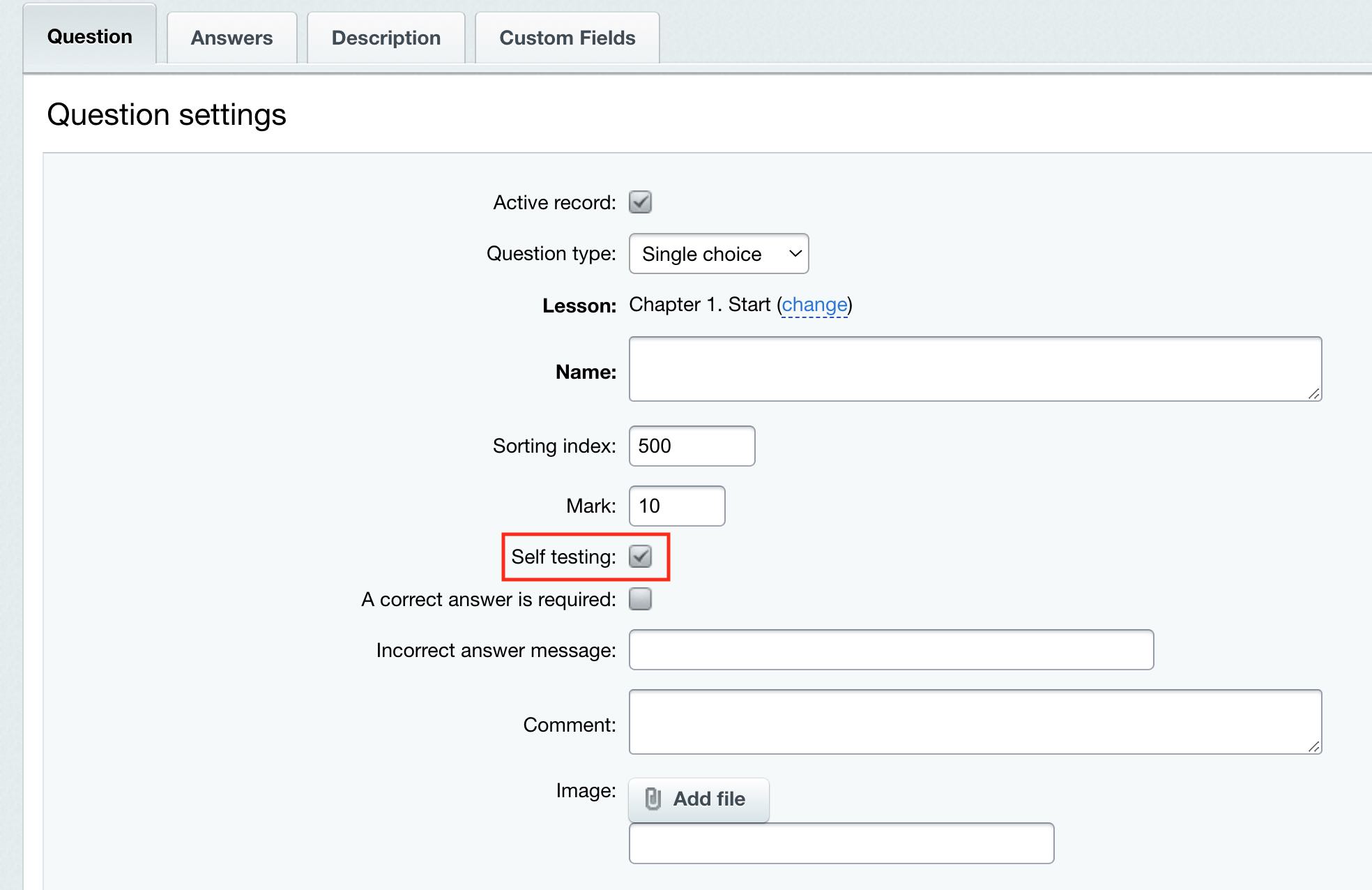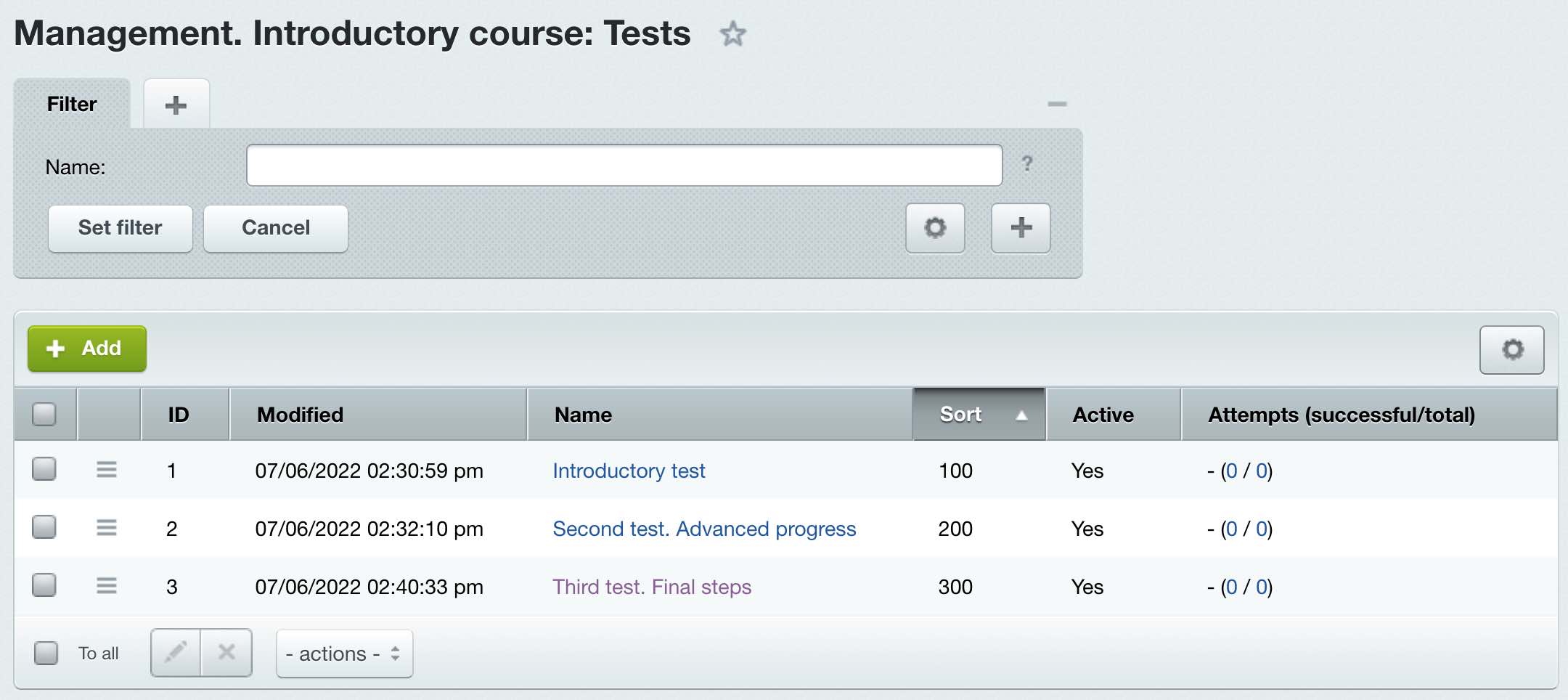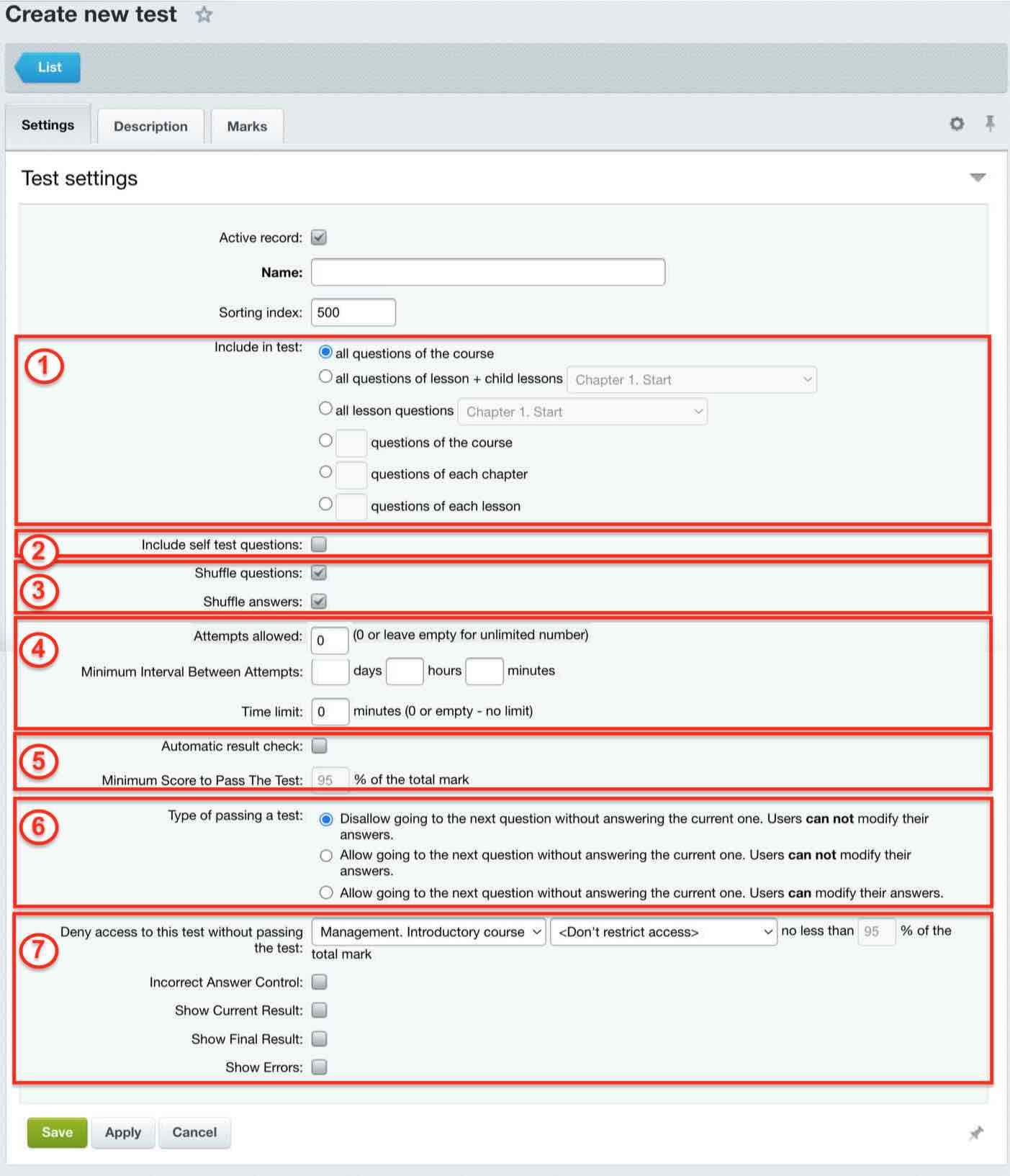Last Modified: 07.07.2022
|
|
|
Views: 4036
Last Modified: 07.07.2022 Tests for evaluating user knowledge are created based on the course lesson questionnaires. Main difference of final tests: all information on completed tests is strictly registered (number of attempts, number of accumulated points and etc.). Self-assessment testsSelf-assessment test (or a self-test) is designed (as evident from its name) to evaluate student's level of acquired knowledge. This is not a final evaluation of knowledge, but an intermediary one, without collecting information about successful test completion by individual users. Self-assessment test is generated automatically from created questions, if they have checkmarked the Self-testing field.
Important! Self-assessment test will be deleted when no question remains with the Self testing checkmark.
Final testManaging final tests for the course is performed at the Tests page (Services > e-Learning > Courses > course_name > Tests):
New test is created using the Add button, located at the context panel. You need to specify test parameters in the opened form. Parameters are grouped by designation:
Courses developed by Bitrix24
|


